For your L.A. bucket list: An epic city hike that has it all
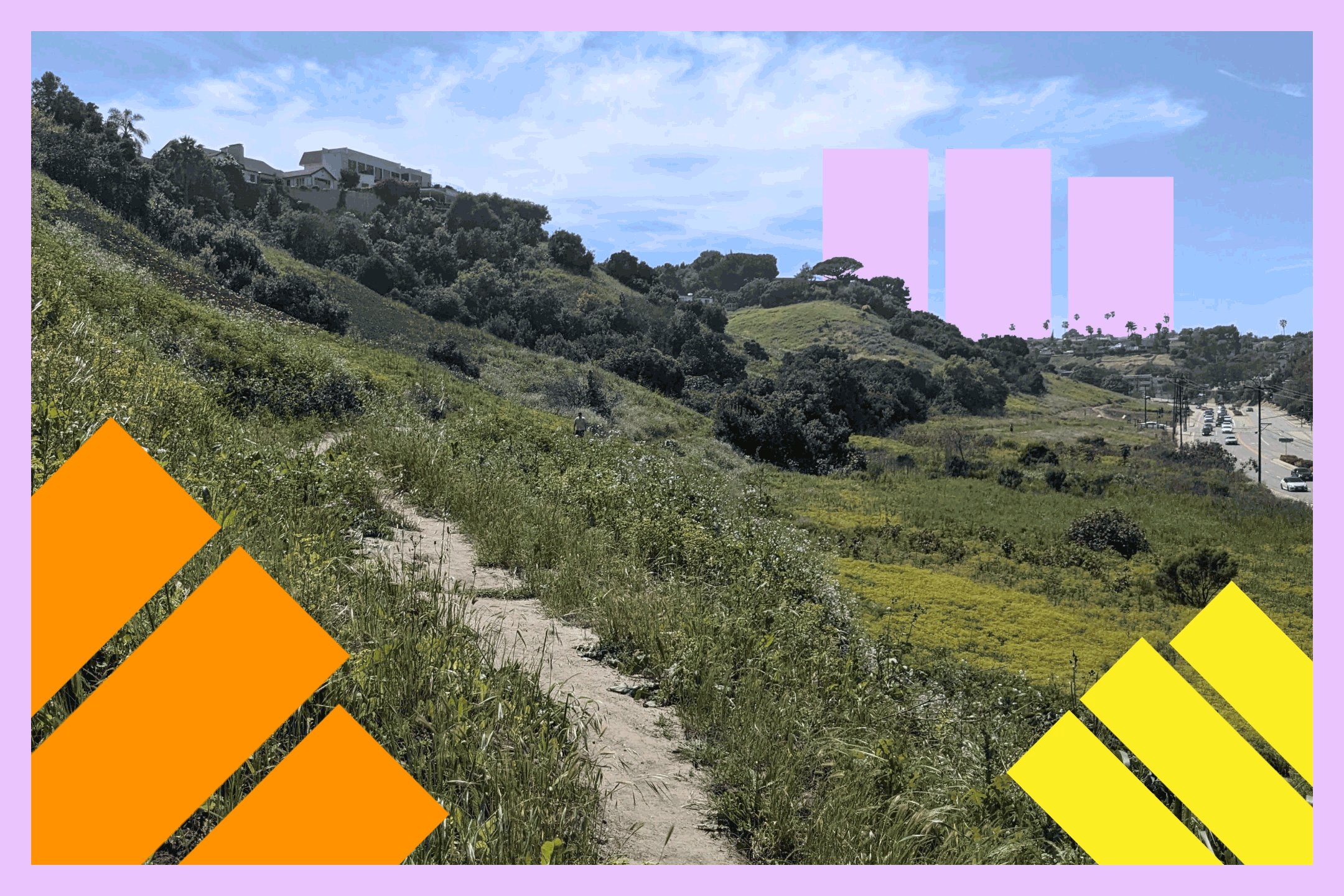
There aren’t many hiking trails in Southern California that feature hummingbirds, a fishing lake, a 440-foot-long truss bridge, an abundance of native plants and coastal wetlands all in one uninterrupted stretch. That’s what makes the Park to Playa Trail so special. It begins near a busy five-point intersection in the Baldwin Hills-Crenshaw district and ends about 13 miles later at the Pacific Ocean. Throw in a public fruit grove, a birds’-eye view of soccer games in neighboring parks, city-to-ocean views and a thriving creek, and you’ve got an extraordinary trek that can’t be replicated anywhere else.
You are reading The Wild newsletter
Sign up to get expert tips on the best of Southern California's beaches, trails, parks, deserts, forests and mountains in your inbox every Thursday
You may occasionally receive promotional content from the Los Angeles Times.
I’ve hiked sections of Park to Playa over the years. I also followed the 2021 opening of a pedestrian bridge across La Cienega Boulevard that provided a final link between Kenneth Hahn State Recreational Area and Baldwin Hills. But I’ve always been skeptical about traversing the entire 13-mile path.
That’s in part because the last six miles follow the Ballona Bike Path along a cement flood control channel that I’ve always associated with trash and lack of nature. Would its proximity to the city and road bikers diminish the buzz I usually get from spending time on more remote trails?
Earlier this month, I decided to find out.
Walking the whole trail took me about 3 1/2 hours and gave me a new perspective on a city that I thought I knew backward and forward. Here’s a recap with things to keep in mind if you’d like to try it yourself.
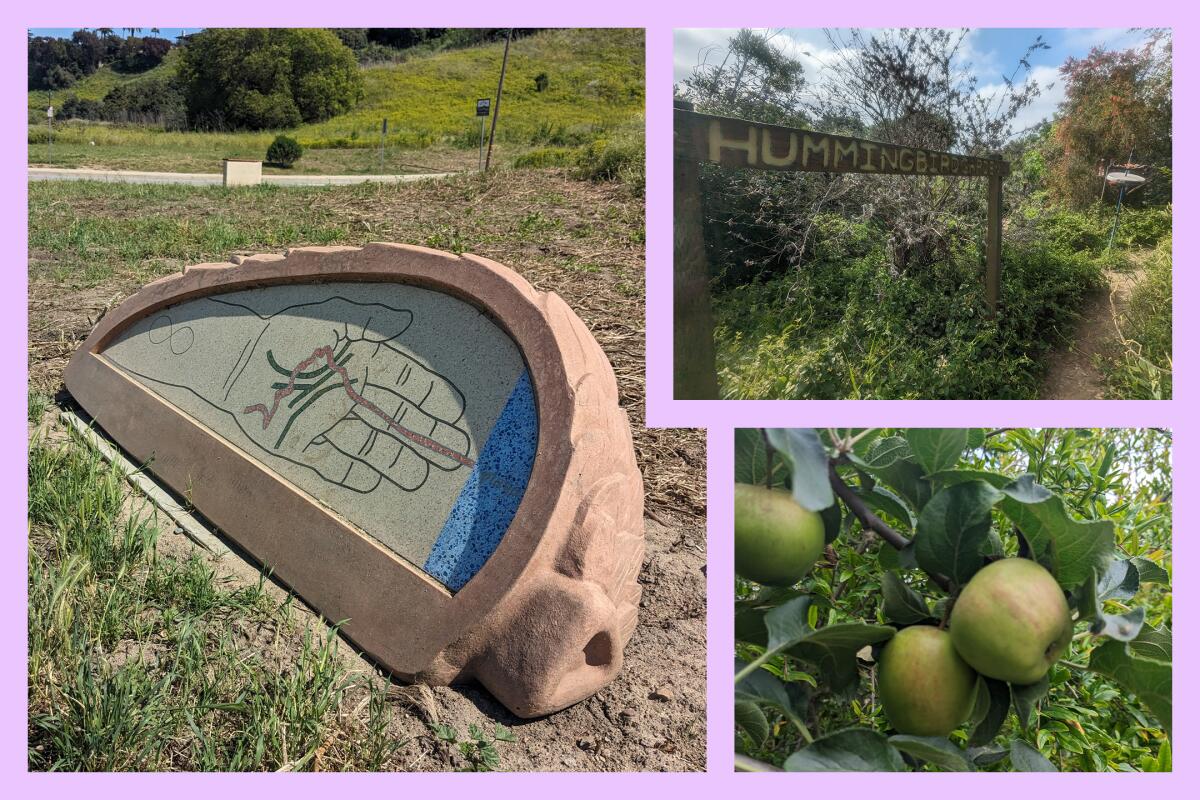
Miles 1-3
I parked along Presidio Drive near the trail’s start; there’s also a free lot at Stocker Street and Overhill Drive. The first mile parallels busy Stocker Street, but the trail, currently flanked by yellow and purple wildflowers, sits far enough above the road that the traffic noise never felt intrusive. Instead, seeing the steady stream of cars from a distance reminded me that I would be blissfully vehicle-free for the next few hours.
The trail enters the southeastern end of Kenneth Hahn State Recreation Area at the intersection of Stocker and La Brea (one of two stoplights I encountered on the whole journey). I walked the two miles across Kenneth Hahn park at a brisk pace, stopping only to chat with a fisherman at the freshwater lake on the west side. He told me the lake is stocked with catfish, bass and blue gill and all you need to fish there is a county fishing license.
Highlights: A public fruit park with apple and lemon trees (at the Stocker Corridor parking lot) and the sweet scent of honeysuckle emanating from the hummingbird garden (at Kenneth Hahn). I also loved what I didn’t see: the country’s largest active urban oil field. It’s adjacent to the park, but thick canopies of trees keep it mostly hidden from the trail.
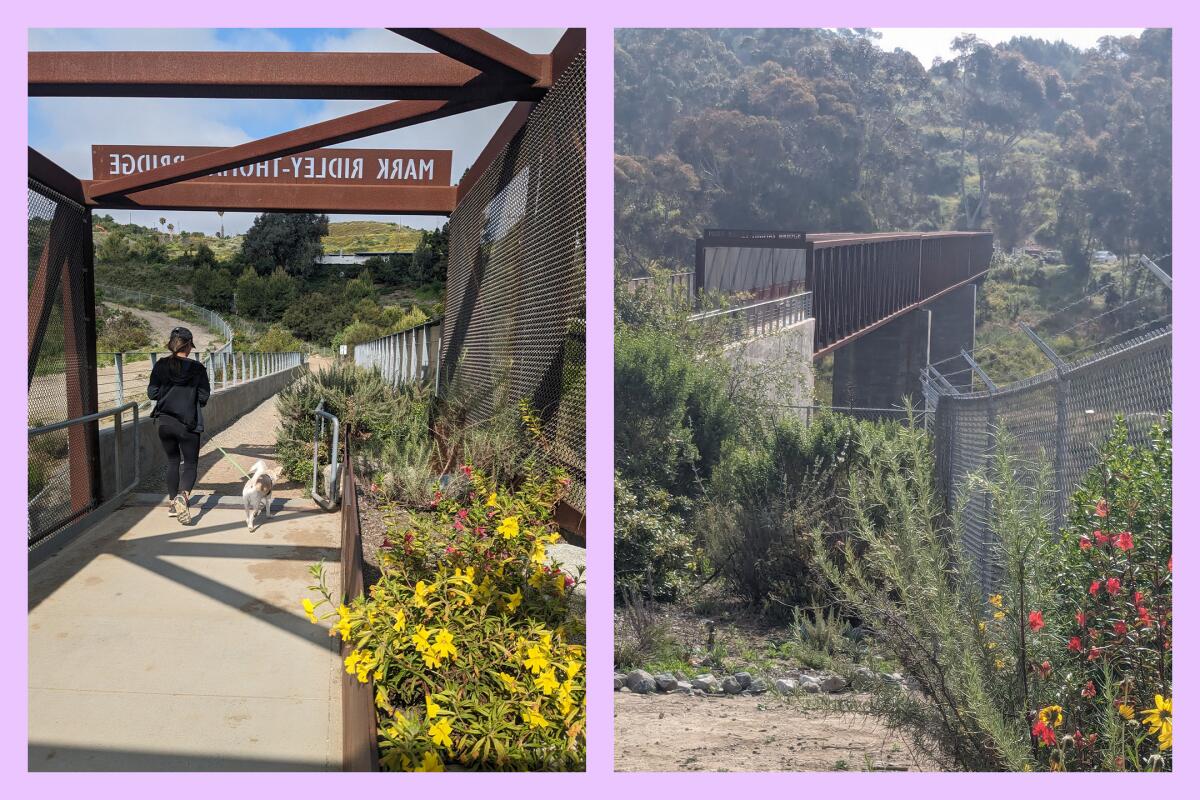
Miles 3-6
This stretch begins at the awesome footbridge above six-lane La Cienega Boulevard. It’s a fitting gateway to this section of the trail, which winds uphill to Stoneview Nature Center, then links to Baldwin Hills Scenic Overlook and Culver Park. This was the busiest stretch of the path, filled with weekend dog walkers, sprinters in training and families soaking up the sun.
Highlights: The unexpected sight of a mural created by Otis College of Art students (its name, Lavender Chiveevi, is a nod to local wildflowers and the use of geometric patterning by Indigenous tribes.). I also loved checking out the art and gardens just off the trail at Stoneview Nature Center, a former elementary school that sits atop a brownfield site.
Miles 8-13
The last six miles went by faster than expected, in part because the flat, paved surface made it easy to maintain a steady pace. I passed murals, soccer games, a group of kickboxers and flourishing backyard gardens in the unlikeliest of places. The cyclists sharing the trail never seemed like an intrusion (they actually made me feel safer during a few deserted stretches).
Highlights: Seeing the flood channel west of Inglewood Boulevard transform into a version of the natural, spring-fed ecosystem that it once was. I also loved the 180-degree views of sand, ocean and sailboats that accompanied me on the trail’s last quarter mile in Playa del Rey — as satisfying as any panoramic viewpoint from the top of a mountain.
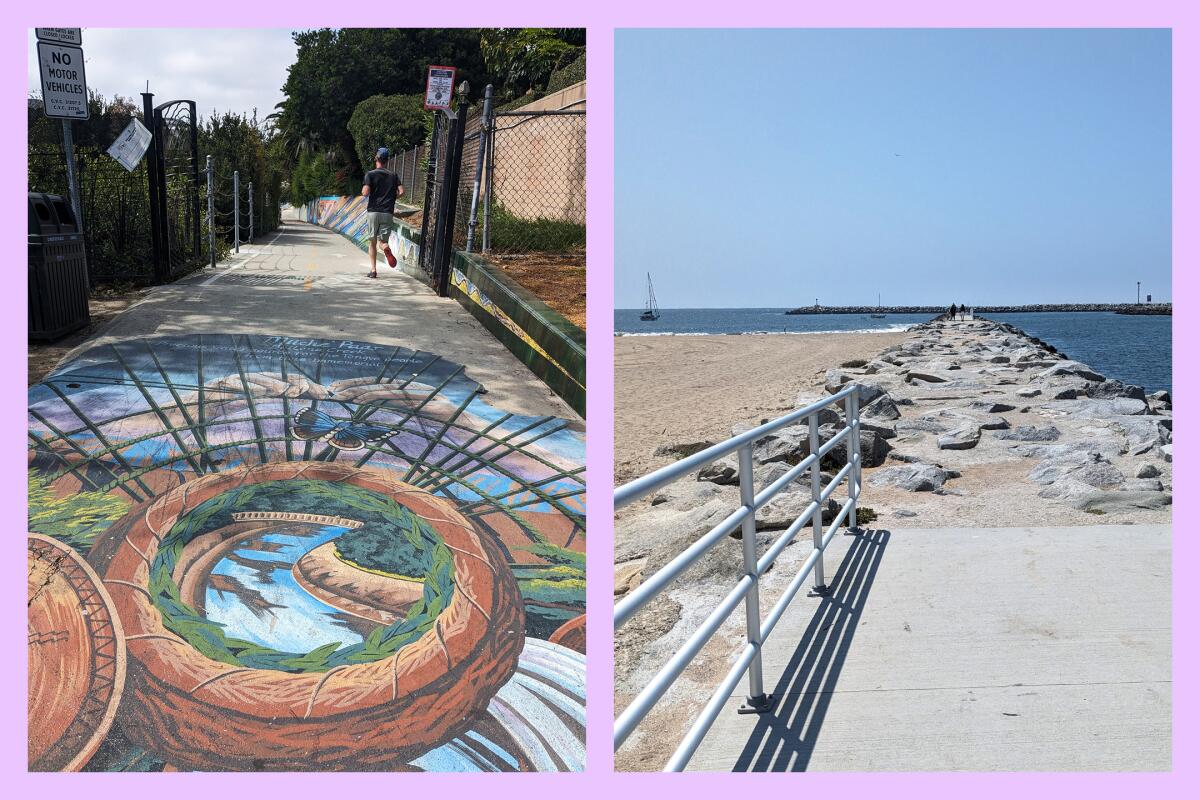
Return options
I opted for a Lyft to take me the eight road miles back to Stocker Street, but public transportation is also an option: L.A. Metro bus #232 with a transfer to #102 at Manchester/Truxton is the most direct route.
Got kids?
A new picture book, “From Park to Playa: The Trails that Connect Us” by local author Nell Cross Beckerman, takes inspiration from the trail and encourages families to seek out nature in their own neighborhoods and discover the power of our local parks and paths to connect us all.

3 things to do
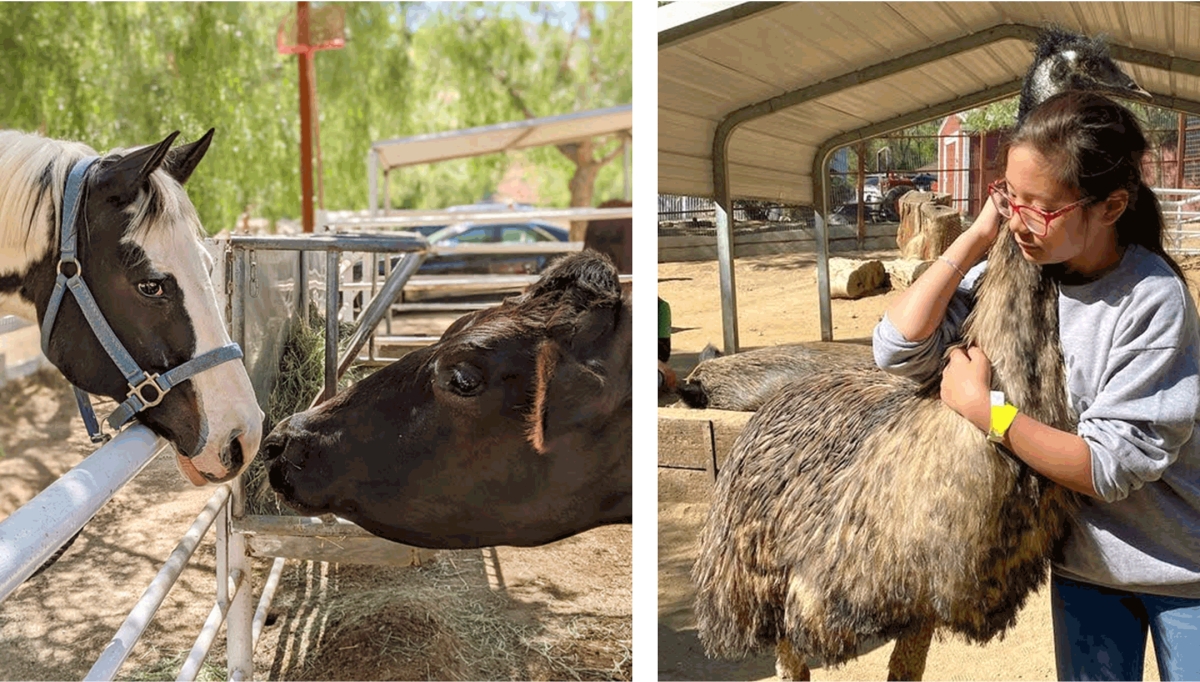
1. Hug a cow in Santa Clarita
Sheep, cows, alpacas, pot-bellied pigs and dozens of other animals rescued from slaughter or abuse live on a six-acre property in Santa Clarita known as the Gentle Barn. The nonprofit animal rescue operation opens its meadows and pastures to the public every Sunday from 10 a.m. to 2 p.m. Volunteers are on hand to share stories and guide visitors in brushing cows, feeding horses and playing with goats and sheep. Tickets are $25 ($15 for ages 2-12) and must be purchased in advance at gentlebarn.org.
2. Check out a historic trail race in Sierra Madre
The Mount Wilson Trail Race, one of the oldest races in California, takes place in Sierra Madre this Saturday. The race itself, which follows the historic trail 8.6 miles from Sierra Madre up to Orchard Camp, is sold out, but anyone can come out and cheer on the runners, check out the vendor expo and soak up the small-town community vibe. There is also a one-mile fun run for kids (registration is free and doesn’t need to be done in advance) and a pre-race pasta feed and beer garden that’s open to anyone from 5:30 to 7 p.m. Friday. All events take place at Kersting Court, near the intersection of Sierra Madre Boulevard and Baldwin Avenue, with the main race starting at 7:30 a.m. For more info, go to mountwilsontrailrace.com.
3. Learn mountain biking skills in Irvine
Orange County is home to an active mountain biking community with trails ranging from beginner to black diamond. The Irvine Ranch Conservancy is hosting a clinic for all levels of riders from 7 to 11 a.m. on Sunday. The free class (there’s also one on fundamental bike skills on June 15) covers basic skills, gear setup and bike maintenance, plus riding techniques such as bike handling over log piles, A-frames and other human-made features. The clinic typically meets at the Portola Staging Area at the Limestone Canyon Reserve, but the location is subject to change. Reservations are required and can be made at letsgooutside.org.

The must-read
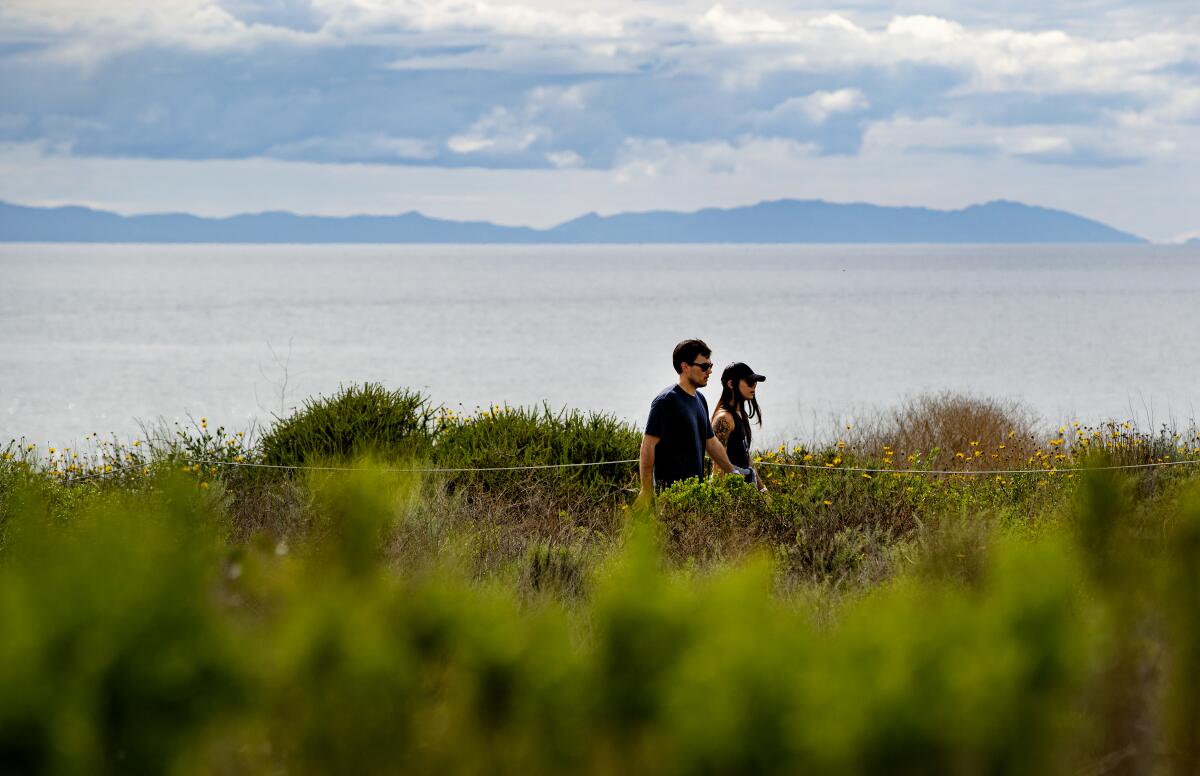
I often say that Montaña de Oro, with its tide pools and stunning bluff trails, is my favorite California state park. But after reading John McKinney’s piece on the general lack of awareness about our state parks, I realized it’s impossible to pick just one. There’s Crystal Cove, Watts Towers, Anza Borrego, the list goes on and on — they all offer something special and deserve attention. California has 279 state parks (with Dos Dios Ranch in the San Joaquin Valley moving it up to 280 next month), and McKinney makes the case that better outreach and attention would lead to stronger financial support and commitment to help them thrive. At the very least, don’t cut the library park pass program, he pleads. It lets library cardholders check out free passes to state parks and is facing elimination in the governor’s proposed 2024-25 state budget.
Happy adventuring,

P.S.
Starting in November, backpackers will have to pay $12 a person to camp overnight along the Lost Coast National Recreational Trail. It’s part of an effort to preserve and improve the popular northern California destination, reports Jaclyn Cosgrove, with the money going toward staff increases and trail and campground maintenance. Cosgrove breaks down what the new fees will mean for visitors and offers tips on how to plan ahead and navigate the reservation system before the fees take effect.
For more insider tips on Southern California’s beaches, trails and parks, check out past editions of The Wild. And to view this newsletter in your browser, click here.
Sign up for The Wild
We’ll help you find the best places to hike, bike and run, as well as the perfect silent spots for meditation and yoga.
You may occasionally receive promotional content from the Los Angeles Times.




